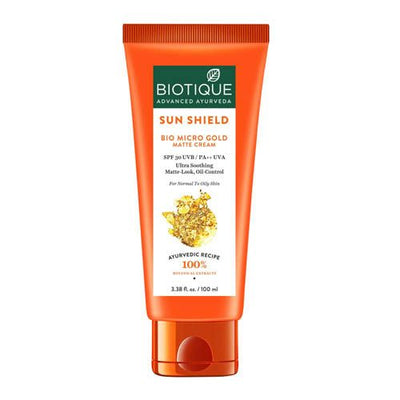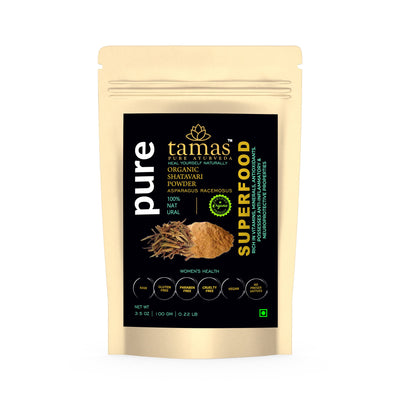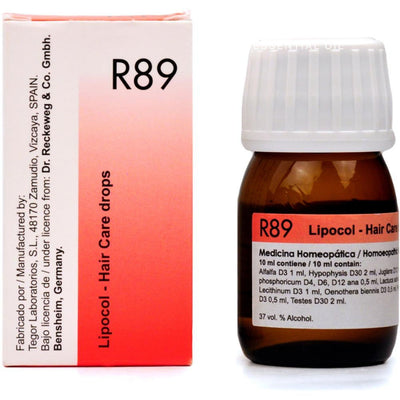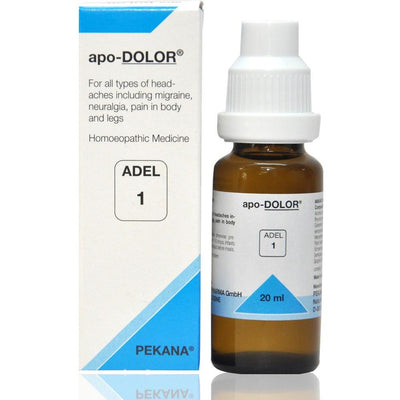
Dhanwantharam Thailam
Dhanwantharam Thailam is Anti-Inflammatory, Analgesic, Anti-rheumatic and a Nervine Tonic.
Reference Text: (Ashtanga Hridaya)
PRESENTATION: 100 Ml
Dhanwantharam Thailam is a fragrant and earthy oil containing 28 herbs that are extremely helpful in promoting health, energy, and vitality. This ayurvedic oil enhances the circulation and provides nourishment to the muscles. Importantly it is nerve tonic and is one of the prescriptions in dealing with pain relief and anti-inflammation formulated for Vata disorders. Known to be used as a pain relief oil in ayurvedic practices, it contains ingredients known to be helpful in relieving muscle cramps, numbness, pain, and swelling. Dhanwantharam Thailam is an ayurvedic medicine helpful in the treatment of neurological disorders and is known to be beneficial in pacifying degenerative conditions caused by Vata and post-traumatic conditions.
Dhanwantharam Thailam is one of the oils for pain that can be helpful in the treatment of rheumatic disorders and neuromuscular conditions. It is also an analgesic and is helpful in providing relief to pain and inflammation found in joints, bones, tendons, and cartilage. It can be considered one of the best massage oils made from natural ingredients.
Dhanwantharam Thailam Ayurvedic massage oil is also a nature-derived nerve tonic that is said to be helpful in protecting the nervous systems and all its functions. It pacifies Vata aggression and is known to benefit the neurological and musculoskeletal systems. This Ayurvedic body massage oil is used to treat rheumatoid arthritis, osteoarthritis, neck pain, and backache due to spondylosis.
Ingredients
Balamoola - Sida cordifolia
Paya
Water
Yava – Barley – Hordeum vulgare
Kola – Zyziphus jujuba
Kulattha – Horse gram – Dolichos biflorus
Dashamoola – a group of ten roots
The ten Dasha Moola roots are taken from a group of very potent herbs that are used in Ayurvedic medicine for treating a wide variety of problems. The ten herbs are:
Taila – Oil of Sesamum indicum
The paste is made of 6 grams of each of:
Meda - Polygonatum cirrhifolium
Anti-aging herb
Mahameda - Polygonatum verticillatum
Anti-ageing herb
Daru – Cedrus deodara
Manjistha – Rubia cordifolia
Kakoli - Fritillaria roylei
Anti-ageing herb
Ksheerakakoli - Lilium polyphyllum
Anti-ageing herb
Chandana – Pterocarpus santalinus
Sariva – Hemidesmus indicus
Kushta – Saussurea lappa
Tagara – Valeriana wallichi
Jeevaka - Malaxis acuminata
Anti-ageing herb
Rishabhaka - Manilkara hexandra
Saindhava Lavana – Rock salt
Soothes digestive disorders
Kalanusari – Valeriana wallichi
Shaileya - Convolvulus pluricaulis
Vacha – Acorus calamus
Agaru – Aquilaria agallocha
It is used in traditional medicine as an astringent, carminative, antiasthmatic and antidiarrhoeal, antidysenteric.
Punarnava – Boerhaavia diffusa
Ashwagandha – Withania somnifera
Shatavari – Asparagus racemosus
Ksheerashukla - Ipomoea mauritiana
Pacifies Vata and Pitta Doshas
Yashti – Licorice – Glycyrrhiza glabra
This is one among the group of 10 herbs called the Jeevaneeya Gana (10 herbs) which have anti-aging properties
Haritaki – Terminalia chebula
Vibhitaki – Terminalia bellirica
Amla – Emblica officinalis
Mashaparni – Teramnus labialis
Ayurvedic herbs that are believed to have anti-ageing properties
Mudgaparni - Phaseolus trilobus
Ayurvedic herbs that are believed to have anti-ageing properties
General overview of Neurological Disorders and Rheumatic Disorders
Neurological disorders are diseases that affect the brain and the central and autonomic nervous systems. Because they are often associated with a number of conditions, neurological symptoms can be easy to dismiss but they can be indicators of serious neurological conditions. Here are some of the top symptoms of neurological disorders:
Headaches: Depending on where the tension is located, how frequently they occur, and how much pain you’re experiencing, headaches can be a symptom of a larger problem.
Change in vision: Blurred, double, or loss of vision can be a sign of a more severe neurological condition.
The weakness of extremities: Arms or legs feeling heavy or numb for a prolonged period of time or for an unknown reason.
Other signs and symptoms include sleep problems (insomnia), slurred speech, memory loss, and chronic nausea.
Rheumatism refers to various painful medical conditions that affect joints, bones, cartilage, tendons, ligaments, and muscles. It is characterized by pain and a consequent reduction in the range of motion and function in one or more areas of the musculoskeletal system. This classification of diseases is also characterized by inflammation that affects the connecting or supporting structures of the body - most commonly the joints, but also sometimes the tendons, ligaments, bones, and muscles. Some rheumatic diseases even affect the organs and can ultimately cause loss of function in the affected body parts.
Rheumatic diseases include arthritis, which literally means ‘joint inflammation’ and encompasses more than a hundred different disorders. Rheumatic diseases that primarily affect the spine are considered spondyloarthropathies. There are different symptoms to rheumatic diseases including persistent joint pain, tenderness, inflammation indicated by joint swelling, stiffness, redness, and/or warmth, joint deformity, loss of range of motion or flexibility in joint and extreme fatigue, lack of energy, weakness, or a feeling of malaise.
Common Rheumatic Disorders
Years ago, conditions like this fell under the broad heading of rheumatism. Now there are more than 200 distinct rheumatic diseases. Among the most common ones are:
What Causes Neurological and Rheumatic Disorders?
The causes of neurological dysfunction can be quite diverse. Both the spinal cord and brain are insulated by numerous membranes that can be vulnerable to force and pressure. The peripheral nerves located deep under the skin can also be vulnerable to damage. Neurological disorders can affect an entire neurological pathway or a single neuron. Even a small disturbance to a neuron’s structural pathway can result in dysfunction. As a result, neurological disorders can result from a number of causes, including:
Most of these conditions happen when your immune system goes awry and attacks your own tissues. Sometimes it’s in your genes and other times it is a result of environmental conditions and factors like cigarette smoke, pollution, or an infection causing viruses and bacteria. In general, having certain gene variants can increase a person's susceptibility to rheumatic diseases, and factors in the environment may trigger the onset of the disease.
An Ayurvedic Perspective to Neurological Disorders and Rheumatic Disorders
Ayurveda has a holistic approach in that it treats not just the disease but the entire being. It takes into account the physical, intellectual, mental, and spiritual aspects of the individual. Neurological disorders (Vatavyadhi) are considered as major critical diseases in Ayurveda because of their severity. The vital energy Vata is directly responsible for the nervous system – for the transmission of the cerebral signals to the organs, for the senses, feelings, and thoughts. If one of the energies amongst the Vata, Pitta, or Kapha goes out of balance, then the functions of certain organs get disturbed and the organism develops illnesses. In the case with Vata, these are neurological diseases.
Ayurveda, an ancient system of medicine, also dwells in detail about joint disorders like gout (vatarakta), arthritis (sandhivata), rheumatic diseases (amavata), and many more. Among these, amavata is a disease which is caused due to hypo-functioning of the digestive fire. It is a disease complex of which Rheumatic arthritis is a part. Ayurveda follows a defense strategy and it focuses its search on the etiological process, where disequilibrium at a higher level of physiology affects the gastrointestinal tract, causing an immune response that results in inflammation.
According to Ayurveda science, the toxins - ama is carried by imbalanced Vata and reaches Kapha (phlegm) predominant sites like joints, stomach, tendons, and ligaments. Being sticky by nature, the toxins block micro-channels (srotasa) which nourish the body. When this ama accumulates in the joints, it produces the disease amavata and proceeds to spread all over the body. All channels like the arteries, intercellular spaces, and the pores in the cells in which nutrients flow through and nourish the body tissues, get partially blocked leading to a decreased supply of nutrients to body tissues and cells. And as a result immunity of the body gets lowered, appetite reduces, and over time the body becomes weak.
Dhanwantharam Thailam is Anti-Inflammatory, Analgesic, Anti-rheumatic and a Nervine Tonic.
Reference Text: (Ashtanga Hridaya)
PRESENTATION: 100 Ml
Dhanwantharam Thailam is a fragrant and earthy oil containing 28 herbs that are extremely helpful in promoting health, energy, and vitality. This ayurvedic oil enhances the circulation and provides nourishment to the muscles. Importantly it is nerve tonic and is one of the prescriptions in dealing with pain relief and anti-inflammation formulated for Vata disorders. Known to be used as a pain relief oil in ayurvedic practices, it contains ingredients known to be helpful in relieving muscle cramps, numbness, pain, and swelling. Dhanwantharam Thailam is an ayurvedic medicine helpful in the treatment of neurological disorders and is known to be beneficial in pacifying degenerative conditions caused by Vata and post-traumatic conditions.
Dhanwantharam Thailam is one of the oils for pain that can be helpful in the treatment of rheumatic disorders and neuromuscular conditions. It is also an analgesic and is helpful in providing relief to pain and inflammation found in joints, bones, tendons, and cartilage. It can be considered one of the best massage oils made from natural ingredients.
Dhanwantharam Thailam Ayurvedic massage oil is also a nature-derived nerve tonic that is said to be helpful in protecting the nervous systems and all its functions. It pacifies Vata aggression and is known to benefit the neurological and musculoskeletal systems. This Ayurvedic body massage oil is used to treat rheumatoid arthritis, osteoarthritis, neck pain, and backache due to spondylosis.
Ingredients
Balamoola - Sida cordifolia
- This herbal ingredient is used in Ayurvedic medicine for its properties of being a good analgesic, diuretic, antipyretic, antiviral, antioxidant, antirheumatic, immune enhancer, hypoglycaemic and hepatoprotective
- It is especially useful in the Ayurvedic treatments for neuromuscular and neurodegenerative disorders
- Bala is used in Vata Dosha related problems
Paya
Water
Yava – Barley – Hordeum vulgare
- It is used in traditional medicine as a fat scraper in the treatment of obesity
- It is used in traditional medicine worldwide to nourish the patient
- It is a natural diuretic and antipyretic
- It increases the Vata Dosha and helps alleviate the symptoms of Kapha and Pitta vitiation
Kola – Zyziphus jujuba
- This is the Indian Jujube or Chinese apple
- It is high in Vitamin C’
- It is used in Ayurvedic medicine to treat excessive thirst, fever and bleeding disorders
- It pacifies the Vata and Kapha Doshas and does not increase the Pitta Doshas
Kulattha – Horse gram – Dolichos biflorus
- It is used in Ayurveda to ease the symptoms of kidney stones, piles, and asthma
- It is used in Ayurveda to reduce the vitiated Kapha and Vata Doshas. It also increases the Pitta and Rakta Doshas
- It is rich in calcium, ascorbic acid, and lysine
Dashamoola – a group of ten roots
The ten Dasha Moola roots are taken from a group of very potent herbs that are used in Ayurvedic medicine for treating a wide variety of problems. The ten herbs are:
- Bilva (Aegle marmelos)
- Syonaka (Oroxylum indicum)
- Gambhari (Gmelina arbora)
- Patala (Stereospermum suaveolens)
- Agnimantha (Premna integrifolia)
- Salaparni (Desmodium gangeticum)
- Prasniparni (Uraria picta)
- Brahati (Solanum indicum)
- Kantakari (Solanum surattnse)
- Goksura (Tribulus terrestis)
Taila – Oil of Sesamum indicum
- Warm in nature
- Pacifies Kapha and Vata Doshas
- Is used in Ayurveda to treat neuromuscular disorders. It is strengthening and gets well absorbed by the tissues
The paste is made of 6 grams of each of:
Meda - Polygonatum cirrhifolium
Anti-aging herb
Mahameda - Polygonatum verticillatum
Anti-ageing herb
Daru – Cedrus deodara
- Balances the Kapha and Vata Doshas
- Relieves the Ama in the body
- Used in Ayurveda for treatment of neurological disorders and arthritis.
- Relieves swelling and used in Ayurveda as an anti-inflammatory
Manjistha – Rubia cordifolia
- Used in Ayurveda as a blood detoxifier
- It calms the Pitta in the body
- Balances the Kapha and Pitta Doshas
- It is used in Ayurveda to treat inflammatory problems
Kakoli - Fritillaria roylei
Anti-ageing herb
Ksheerakakoli - Lilium polyphyllum
Anti-ageing herb
Chandana – Pterocarpus santalinus
- Sandalwood
- Traditionally used in the treatment of skin disorders
Sariva – Hemidesmus indicus
- Balances the three Doshas particularly Kapha and Vata Doshas
- It is a coolant
- It is an Ayurvedic blood purifier, diaphoretic, demulcent, alterative, diuretic, and anti-pyretic
Kushta – Saussurea lappa
- It pacifies Vata and Kapha diseases
- It is useful in traditional medicine as a hepato-protective, antiviral, anti-inflammatory, analgesic and anti-hypertensive herb
Tagara – Valeriana wallichi
- Used in Ayurveda to treat weakness and wounds
- Balances all the three Doshas
- Controls the toxins in the body
- Is used in Ayurveda as a rejuvenative
Jeevaka - Malaxis acuminata
Anti-ageing herb
Rishabhaka - Manilkara hexandra
- It is useful in the Ayurvedic treatment of emaciation, thirst, blood disorders, alcohol intoxication, fainting, dizziness, fainting, fever, arthritis, bronchitis and bleeding disorders
- It is used in folk medicine to increase body weight and bulk, to nourish, improve taste and as a cardiac tonic
Saindhava Lavana – Rock salt
Soothes digestive disorders
Kalanusari – Valeriana wallichi
- Used in Ayurveda to treat weakness and wounds
- Balances all the three Doshas
- Controls the toxins in the body
- It is used in Ayurveda as a rejuvenative
Shaileya - Convolvulus pluricaulis
- It is used in traditional medicine as a blood purifier
- Ayurveda states that this herb detoxifies and cleanses the brain and all other areas around it
- It is useful in the treatment of Vata vitiated disorders
Vacha – Acorus calamus
- Balances Kapha and Vata Doshas and relieves Ama
- Treats Vata Dosha imbalances
- Used in Ayurveda as anti-inflammatory, anti-epileptic and digestive
- Is said to improve intelligence, support digestion, relieve bloating, help in psychological disorders, neuralgia
Agaru – Aquilaria agallocha
It is used in traditional medicine as an astringent, carminative, antiasthmatic and antidiarrhoeal, antidysenteric.
Punarnava – Boerhaavia diffusa
- Used in Ayurveda as a diuretic, anti-inflammatory, and swelling reduction properties.
- It balances the Kapha and Vata Doshas
Ashwagandha – Withania somnifera
- It has excellent anti-anxiety and anti-stress properties
- Reduces the effects of tiredness and fatigue
- It is an Ayurvedic adaptogen that is used in folk medicine for strengthening and bodybuilding
Shatavari – Asparagus racemosus
- It is called the queen of herbs
- It is useful in Ayurveda as a nutritive tonic, diuretic, laxative, antitumor, aphrodisiac, rejuvenative, antacid, antispasmodic, antioxidant, demulcent, galactagogue, anti-microbial, anti-depressant, adaptogenic and immunomodulator
Ksheerashukla - Ipomoea mauritiana
Pacifies Vata and Pitta Doshas
Yashti – Licorice – Glycyrrhiza glabra
This is one among the group of 10 herbs called the Jeevaneeya Gana (10 herbs) which have anti-aging properties
Haritaki – Terminalia chebula
- It is used to balance all three Doshas
- It is very famous for being one of the Triphala herbs
Vibhitaki – Terminalia bellirica
- One of the famous Triphala herbs
- It is a major ingredient in Ayurvedic medicines for fever, cold, cough, hair growth, worm infestations as well as Panchakarma treatments
Amla – Emblica officinalis
- Indian gooseberry also called Amla
- It is commonly used as a fruit as well as traditional medicine.
- It has the ability to balance all the three Doshas
Mashaparni – Teramnus labialis
Ayurvedic herbs that are believed to have anti-ageing properties
Mudgaparni - Phaseolus trilobus
Ayurvedic herbs that are believed to have anti-ageing properties
General overview of Neurological Disorders and Rheumatic Disorders
Neurological disorders are diseases that affect the brain and the central and autonomic nervous systems. Because they are often associated with a number of conditions, neurological symptoms can be easy to dismiss but they can be indicators of serious neurological conditions. Here are some of the top symptoms of neurological disorders:
Headaches: Depending on where the tension is located, how frequently they occur, and how much pain you’re experiencing, headaches can be a symptom of a larger problem.
Change in vision: Blurred, double, or loss of vision can be a sign of a more severe neurological condition.
The weakness of extremities: Arms or legs feeling heavy or numb for a prolonged period of time or for an unknown reason.
Other signs and symptoms include sleep problems (insomnia), slurred speech, memory loss, and chronic nausea.
Rheumatism refers to various painful medical conditions that affect joints, bones, cartilage, tendons, ligaments, and muscles. It is characterized by pain and a consequent reduction in the range of motion and function in one or more areas of the musculoskeletal system. This classification of diseases is also characterized by inflammation that affects the connecting or supporting structures of the body - most commonly the joints, but also sometimes the tendons, ligaments, bones, and muscles. Some rheumatic diseases even affect the organs and can ultimately cause loss of function in the affected body parts.
Rheumatic diseases include arthritis, which literally means ‘joint inflammation’ and encompasses more than a hundred different disorders. Rheumatic diseases that primarily affect the spine are considered spondyloarthropathies. There are different symptoms to rheumatic diseases including persistent joint pain, tenderness, inflammation indicated by joint swelling, stiffness, redness, and/or warmth, joint deformity, loss of range of motion or flexibility in joint and extreme fatigue, lack of energy, weakness, or a feeling of malaise.
Common Rheumatic Disorders
Years ago, conditions like this fell under the broad heading of rheumatism. Now there are more than 200 distinct rheumatic diseases. Among the most common ones are:
- Osteoarthritis: is the most prevalent type of arthritis, which primarily affects and destroys cartilage, the soft tissue that cushions the ends of bones within joints.
- Rheumatoid arthritis: is an autoimmune disorder in which the immune system mistakenly attacks the synovium, a soft tissue that lines the joints, leading to inflammation.
- Gout: is a type of arthritis that develops when needle-like crystals of uric acid deposit in the joints, most often those of the big toe.
- Ankylosing spondylitis: is the most common spondyloarthropathy, which may affect the hips, shoulders, and knees, in addition to the spine.
- Reactive arthritis: or Reiter's syndrome is a spondyloarthropathy that develops after an infection of the urinary tract, bowels, or other organs.
What Causes Neurological and Rheumatic Disorders?
The causes of neurological dysfunction can be quite diverse. Both the spinal cord and brain are insulated by numerous membranes that can be vulnerable to force and pressure. The peripheral nerves located deep under the skin can also be vulnerable to damage. Neurological disorders can affect an entire neurological pathway or a single neuron. Even a small disturbance to a neuron’s structural pathway can result in dysfunction. As a result, neurological disorders can result from a number of causes, including:
- Lifestyle-related causes
- Infections
- Genetics
- Nutrition-related causes
- Environmental influences
- Physical injuries
Most of these conditions happen when your immune system goes awry and attacks your own tissues. Sometimes it’s in your genes and other times it is a result of environmental conditions and factors like cigarette smoke, pollution, or an infection causing viruses and bacteria. In general, having certain gene variants can increase a person's susceptibility to rheumatic diseases, and factors in the environment may trigger the onset of the disease.
An Ayurvedic Perspective to Neurological Disorders and Rheumatic Disorders
Ayurveda has a holistic approach in that it treats not just the disease but the entire being. It takes into account the physical, intellectual, mental, and spiritual aspects of the individual. Neurological disorders (Vatavyadhi) are considered as major critical diseases in Ayurveda because of their severity. The vital energy Vata is directly responsible for the nervous system – for the transmission of the cerebral signals to the organs, for the senses, feelings, and thoughts. If one of the energies amongst the Vata, Pitta, or Kapha goes out of balance, then the functions of certain organs get disturbed and the organism develops illnesses. In the case with Vata, these are neurological diseases.
Ayurveda, an ancient system of medicine, also dwells in detail about joint disorders like gout (vatarakta), arthritis (sandhivata), rheumatic diseases (amavata), and many more. Among these, amavata is a disease which is caused due to hypo-functioning of the digestive fire. It is a disease complex of which Rheumatic arthritis is a part. Ayurveda follows a defense strategy and it focuses its search on the etiological process, where disequilibrium at a higher level of physiology affects the gastrointestinal tract, causing an immune response that results in inflammation.
According to Ayurveda science, the toxins - ama is carried by imbalanced Vata and reaches Kapha (phlegm) predominant sites like joints, stomach, tendons, and ligaments. Being sticky by nature, the toxins block micro-channels (srotasa) which nourish the body. When this ama accumulates in the joints, it produces the disease amavata and proceeds to spread all over the body. All channels like the arteries, intercellular spaces, and the pores in the cells in which nutrients flow through and nourish the body tissues, get partially blocked leading to a decreased supply of nutrients to body tissues and cells. And as a result immunity of the body gets lowered, appetite reduces, and over time the body becomes weak.
You may also like
More from Kerala Ayurveda
More from Aasaan
Recently viewed



















